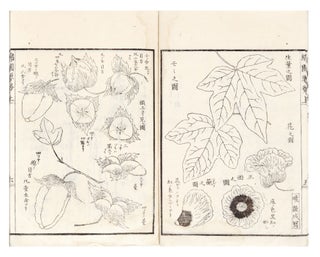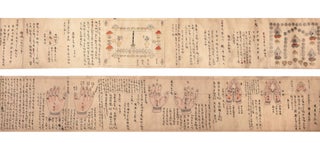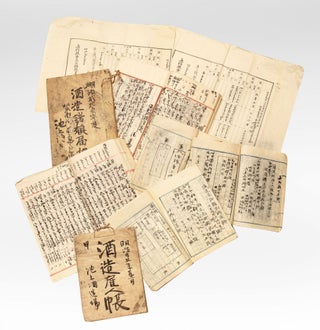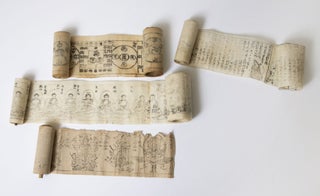The Ups and Ups of Burgundian Wine
Manuscript on paper entitled on upper cover: “Taux des fruits du Baillage [sic] de Nuits depuis 1622 à 1789 à M.rs. De Bays.”
59 leaves, enumerating the names of grapes, cereal crops, and oils and their prices for nearly two centuries. Small folio (273 x 178 mm.), 18th-cent. vellum over boards (tail of spine defective), two (of four) ties lacking. Burgundy: 1622-1792.
A fascinating and rare survival, which details the precipitous rise in the prices of Burgundian wine and the emergence of a hierarchy among regions and vintages over a 170-year period. This document, consisting of three gatherings (28; 28; 3 leaves), bound together and written in several legible hands, provides a wealth of information on grain harvests in the region, which varied greatly from year to year and indicates years with disastrous harvests. The present manuscript constitutes a unique history of agriculture in Burgundy, especially pertaining to the evolving market for Côte de Nuits wine.
“Burgundy had no experience like the boomtime of 18th-century Bordeaux. No new wines were invented, no new districts planted. The Bordeaux picture is all expansion and creation; the Burgundy one of evolving tastes and techniques, of new market forces, and overall of slowly progressing definition: a more precise notion of the character, style and value of the wine from each corner of the Côte…In the Côte de Nuits the notion of the ‘cru’ was further advanced…The vineyards were generally less overcrowded and by now planted with cuttings rather than layers; hence more deep-rooting. Increasingly, in the 18th century, owners of the most prestigious crus selected their best grapes to make separate cuvées, the best vat being called the ‘tête de cuvée’.”–Hugh Johnson, Vintage (1989), pp. 267 & 272.
The motivation for compiling this record-book may have come from the introduction of a law in 1622 that outlawed the sale of Lyonnais and Beaujolais wines as Burgundian. The records of the first three decades consist mostly of grains and oil from the region, but in the early 1670s, wines begin to predominate and the lists for each year become increasingly long. It is very likely that at this point, landowners would have shifted to using any arable land for vastly more lucrative grapes. By the 1690s, dozens of grape varietals are noted from communes such as Auvilliers, Les Cailles, Chambolle, Chorey, Comblanchien, Corgoloin, Côte de Beaune, Gilly, Magny, Saint Georges, Saint Julien, Les Cailles, Vaucrains, Pouilly, Prissey, etc. Prices for wine rose enormously from the 1690s and experienced peaks in 1701, 1733, and 1770. Wines are increasingly categorized by the mid-18th century according to vineyard and in some cases cru.
The name “de Bays” appears several times in the manuscript, and the signature of “de Bays” is found at the end of the year 1771.
Very few comparable documents survive, and the present manuscript provides a vast amount of data on the prices for wine grapes and grains in the 17th and 18th centuries. A couple leaves browned.
Price: $19,500.00
Item ID: 6543

![Item ID: 6543 Manuscript on paper entitled on upper cover: “Taux des fruits du Baillage [sic] de Nuits depuis 1622 à 1789 à M.rs. De Bays.”. BURGUNDIAN WINE, GRAINS.](https://jonathanahill.cdn.bibliopolis.com/pictures/6543.jpg?width=768&height=1000&fit=bounds&auto=webp&v=1551724053)
![Manuscript on paper entitled on upper cover: “Taux des fruits du Baillage [sic] de Nuits depuis 1622 à 1789 à M.rs. De Bays.”](https://jonathanahill.cdn.bibliopolis.com/pictures/6543_2.jpg?width=320&height=427&fit=bounds&auto=webp&v=1551724053)
![Manuscript on paper entitled on upper cover: “Taux des fruits du Baillage [sic] de Nuits depuis 1622 à 1789 à M.rs. De Bays.”](https://jonathanahill.cdn.bibliopolis.com/pictures/6543_3.jpg?width=320&height=427&fit=bounds&auto=webp&v=1551724053)



